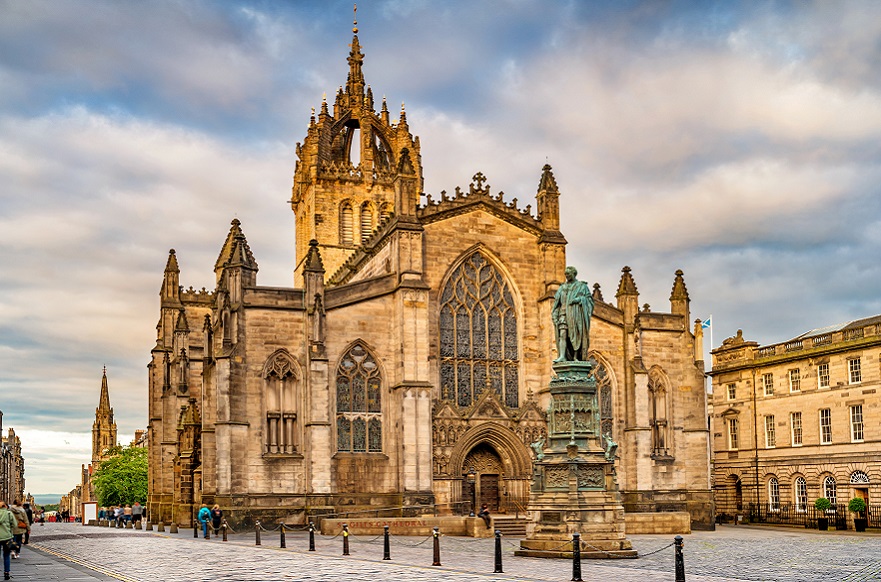Expert Blog: St Giles' Cathedral and the Monarchy
Professor Martyn Bennett explains the history of St Giles' Cathedral and the monarchy
Published on 13 September 2022
Categories: Press office; Research; School of Arts and Humanities;

The lying in state of Her Late Majesty Queen Elizabeth II in St Giles' Cathedral, is highly appropriate. It is within walking distance of the historic royal palace of Holyrood and at the very heart of her Scottish capital city. It was the sight of coronations of her predecessors and it is within metres of the Merkat Cross - the site of so many momentous events in Scottish and British history, including the proclamation of her heir King Charles III.
However, the relationship between the monarchy and the cathedral was not always a happy one and is closely linked to the beginning of the civil wars in the seventeenth century which saw the overthrow of British and Irish monarchy. The first King Charles (1600-1649) was the second king of Great Britain and succeeded his father, the first Stuart/Stewart monarch of Great Britain, King James VI and I, in 1625. Rather briskly Charles I sought to unify the forms of worship in the separate churches of Scotland and England. This was a major task as the two churches had developed along very different lines since the Reformation of the previous century when both the Scottish government and the king’s ancestor Henry VIII had led a break from the Roman Catholic Church.
Charles I decided to unify the form of service in the Scottish church by issuing it with a Prayer Book based on the Church of England’s Book of Common Prayer. Perhaps unwisely a date was set for the launch of the new services and advertised well in advance: 23 July 1637. Thus, on the day that the new liturgy was put into practice everyone was ready, the ministers of the kirks in Scotland, including St Giles' Cathedral. Edinburgh and large numbers of Edinburgh citizens, including the market traders from the Merkat Cross outside the cathedral. The church was crowded to the doors and crowds stood outside. As the dean of the cathedral mounted the steps of the pulpit and opened the book of service ‘all hell broke loose’. To a chorus of chanting outside and hammering on the doors a market trader, apparently called Jenny Geddes, picked up the three-legged stool she had brought from her market stall known as a luckenbooth, outside and threw it at the pulpit shouting as she did that the dean was reading popish doctrine. The riot was on, three-legged cutty stools were hurled through the air and the service ended violently. In one form or another the scene at Edinburgh was repeated that same day in the kirks of Scotland.
Over the coming months, King Charles I was faced with opposition from across his Scottish nation. He proved intractable and passed up every attempt at compromise. The result was dramatic, the Scottish political elite began to restructure the whole system of government, which in effect, reduced the status of the king to that of a constitutional monarch. In response the king tried to use the resources of England, Ireland and Wales to put down this rebellion. There followed two wars, one an inconclusive affair and the second a remarkable defeat for the king which saw the Scottish Army occupying the north of England. In the ensuing decade war broke out across the whole of the British Isles and the issue of religion was never far from the forefront. By 1649 the continued failure of Charles I to compromise led to exasperation. In January that year, in Westminster Hall, where King Charles III met his parliament on 12 September 2022, Charles I was tried for treason. Days later, he was executed and weeks later the monarchy was abolished, and a republic declared.
It is then a curious turn of fate that the late Queen will be lying in state close by the monument to Jenny Geddes’s remarkable act of rebellion which led to the decline and fall of the monarchy.
Professor Martyn Bennett is a professor of early modern history in the School of Arts and Humanities